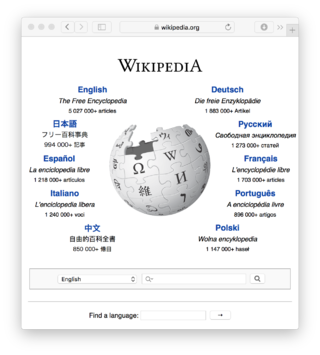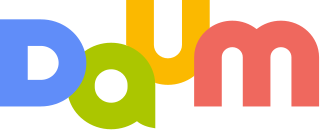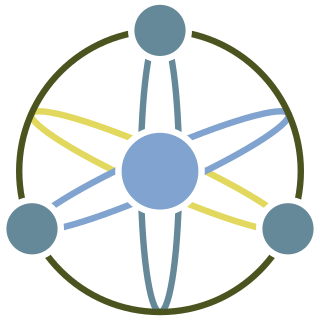
Wiki software is collaborative software that runs a wiki, which allows the users to create and collaboratively edit pages or entries via a web browser. A wiki system is usually a web application that runs on one or more web servers. The content, including previous revisions, is usually stored in either a file system or a database. Wikis are a type of web content management system, and the most commonly supported off-the-shelf software that web hosting facilities offer.

A blog is an informational website consisting of discrete, often informal diary-style text entries (posts). Posts are typically displayed in reverse chronological order so that the most recent post appears first, at the top of the web page. In the 2000s, blogs were often the work of a single individual, occasionally of a small group, and often covered a single subject or topic. In the 2010s, "multi-author blogs" (MABs) emerged, featuring the writing of multiple authors and sometimes professionally edited. MABs from newspapers, other media outlets, universities, think tanks, advocacy groups, and similar institutions account for an increasing quantity of blog traffic. The rise of Twitter and other "microblogging" systems helps integrate MABs and single-author blogs into the news media. Blog can also be used as a verb, meaning to maintain or add content to a blog.

A website is one or more web pages and related content that is identified by a common domain name and published on at least one web server. Websites are typically dedicated to a particular topic or purpose, such as news, education, commerce, entertainment, or social media. Hyperlinking between web pages guides the navigation of the site, which often starts with a home page. The most-visited sites are Google, YouTube, and Facebook.

An Internet forum, or message board, is an online discussion site where people can hold conversations in the form of posted messages. They differ from chat rooms in that messages are often longer than one line of text, and are at least temporarily archived. Also, depending on the access level of a user or the forum set-up, a posted message might need to be approved by a moderator before it becomes publicly visible.

Daum is a South Korean web portal. It offers various Internet services to web users, including a popular free web-based e-mail, messaging services, shopping, news, and webtoon services. The word "Daum" means "next" and also "diverse voices" in Korean.
Open-source journalism, a close cousin to citizen journalism or participatory journalism, is a term coined in the title of a 1999 article by Andrew Leonard of Salon.com. Although the term was not actually used in the body text of Leonard's article, the headline encapsulated a collaboration between users of the internet technology blog Slashdot and a writer for Jane's Intelligence Review. The writer, Johan J. Ingles-le Nobel, had solicited feedback on a story about cyberterrorism from Slashdot readers, and then re-wrote his story based on that feedback and compensated the Slashdot writers whose information and words he used.

The name Atom applies to a pair of related Web standards. The Atom Syndication Format is an XML language used for web feeds, while the Atom Publishing Protocol is a simple HTTP-based protocol for creating and updating web resources.
Spam in blogs is a form of spamdexing which utilizes internet sites that allow content to be publicly posted, in order to artificially inflate their website ranking by linking back to their web pages. Backlinking helps search algorithms determine the popularity of a web page, which plays a major role for search engines like Google and Microsoft Bing to decide a web page ranking on a certain search query. This helps the spammer's website to list ahead of other sites for certain searches, which helps them to increase the number of visitors to their website.

WordPress is a web content management system. It was originally created as a tool to publish blogs but has evolved to support publishing other web content, including more traditional websites, mailing lists and Internet forum, media galleries, membership sites, learning management systems, and online stores. Available as free and open-source software, WordPress is among the most popular content management systems – it was used by 43.1% of the top 10 million websites as of December 2023.
The following tables compare general and technical information for many wiki software packages.

Web 2.0 refers to websites that emphasize user-generated content, ease of use, participatory culture, and interoperability for end users.
A web content management system is a software content management system (CMS) specifically for web content. It provides website authoring, collaboration, and administration tools that help users with little knowledge of web programming languages or markup languages create and manage website content. A WCMS provides the foundation for collaboration, providing users the ability to manage documents and output for multiple author editing and participation. Most systems use a content repository or a database to store page content, metadata, and other information assets the system needs.

Blosxom is a free-software weblog program written in Perl by Rael Dornfest. It uses the pre-existing file system instead of a database management system, unlike most blog software.

Gravatar is a service for providing globally unique avatars and was created by Tom Preston-Werner. Since 2007, it has been owned by Automattic, having integrated it into their WordPress.com blogging platform.
This is a list of blogging terms. Blogging, like any hobby, has developed something of a specialized vocabulary. The following is an attempt to explain a few of the more common phrases and words, including etymologies when not obvious.

A photoblog is a form of photo sharing and publishing in the format of a blog. It differs from a blog through the predominant use of and focus on photographs rather than text. Photoblogging gained momentum in the early 2000s with the advent of the moblog and cameraphones.
Google Developers is Google's site for software development tools and platforms, application programming interfaces (APIs), and technical resources. The site contains documentation on using Google developer tools and APIs—including discussion groups and blogs for developers using Google's developer products.

Etherpad is an open-source, web-based collaborative real-time editor, allowing authors to simultaneously edit a text document, and see all of the participants' edits in real-time, with the ability to display each author's text in their own color. There is also a chat box in the sidebar to allow meta communication.
Greymatter is a free and open-source blogging software package, originally created by Noah Grey in November 2000. It was "the original opensource weblogging software". Noah Grey stopped maintaining it around 2002. Since then, it has been maintained by the community of users. It is one of the first software packages created for blogging, and had a large number of users. With the creation of WordPress and Google's Blogspot, its users have declined since 2005, but it is still in use.
OnlyOffice, stylized as ONLYOFFICE, is a free software office suite and ecosystem of collaborative applications. It consists of online editors for text documents, spreadsheets, presentations, forms and PDFs, and the room-based collaborative platform.










